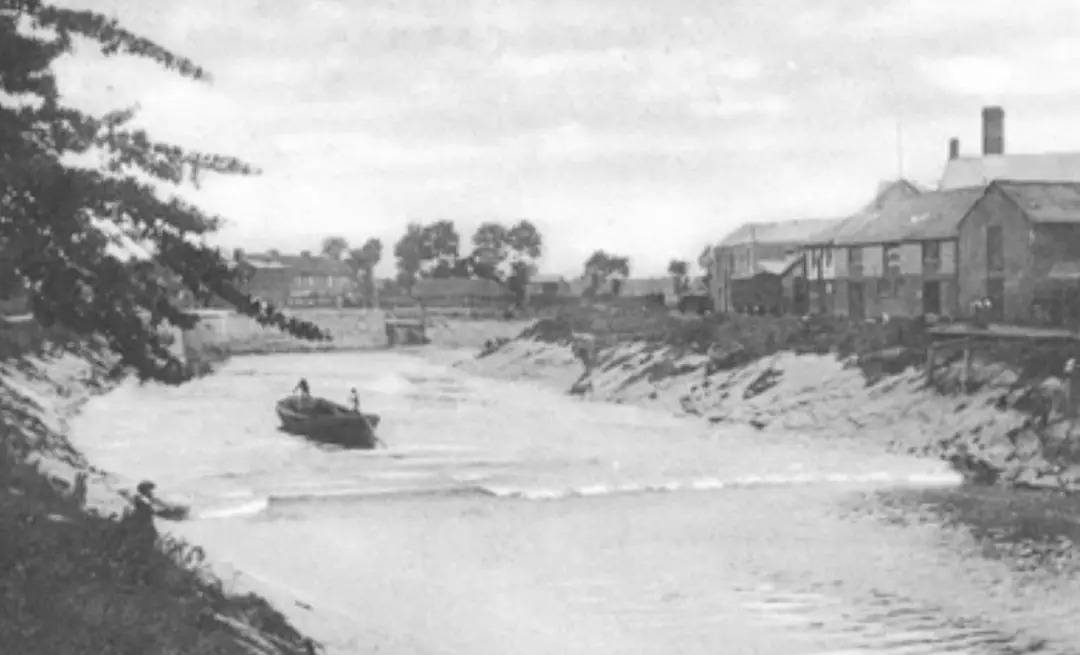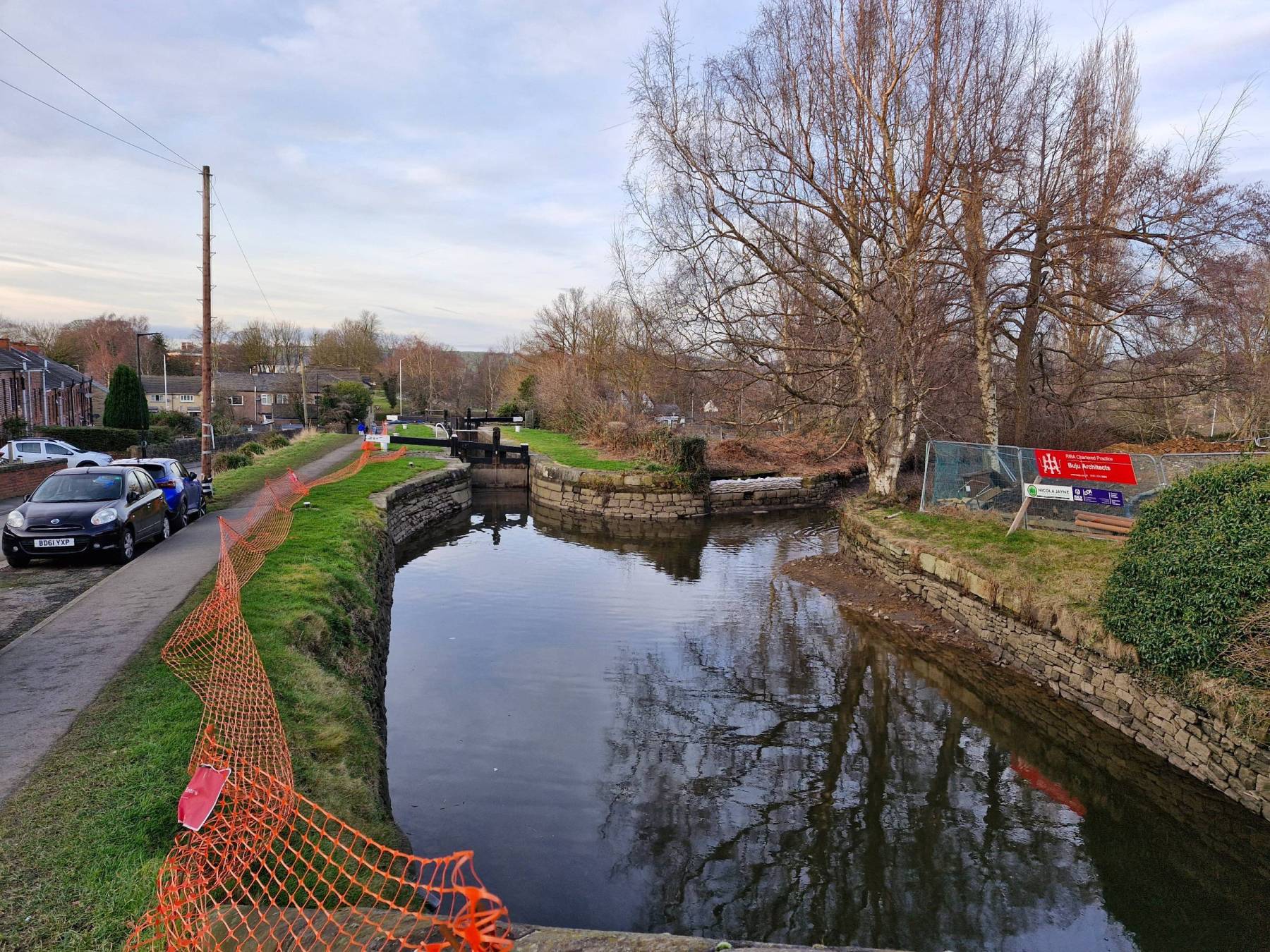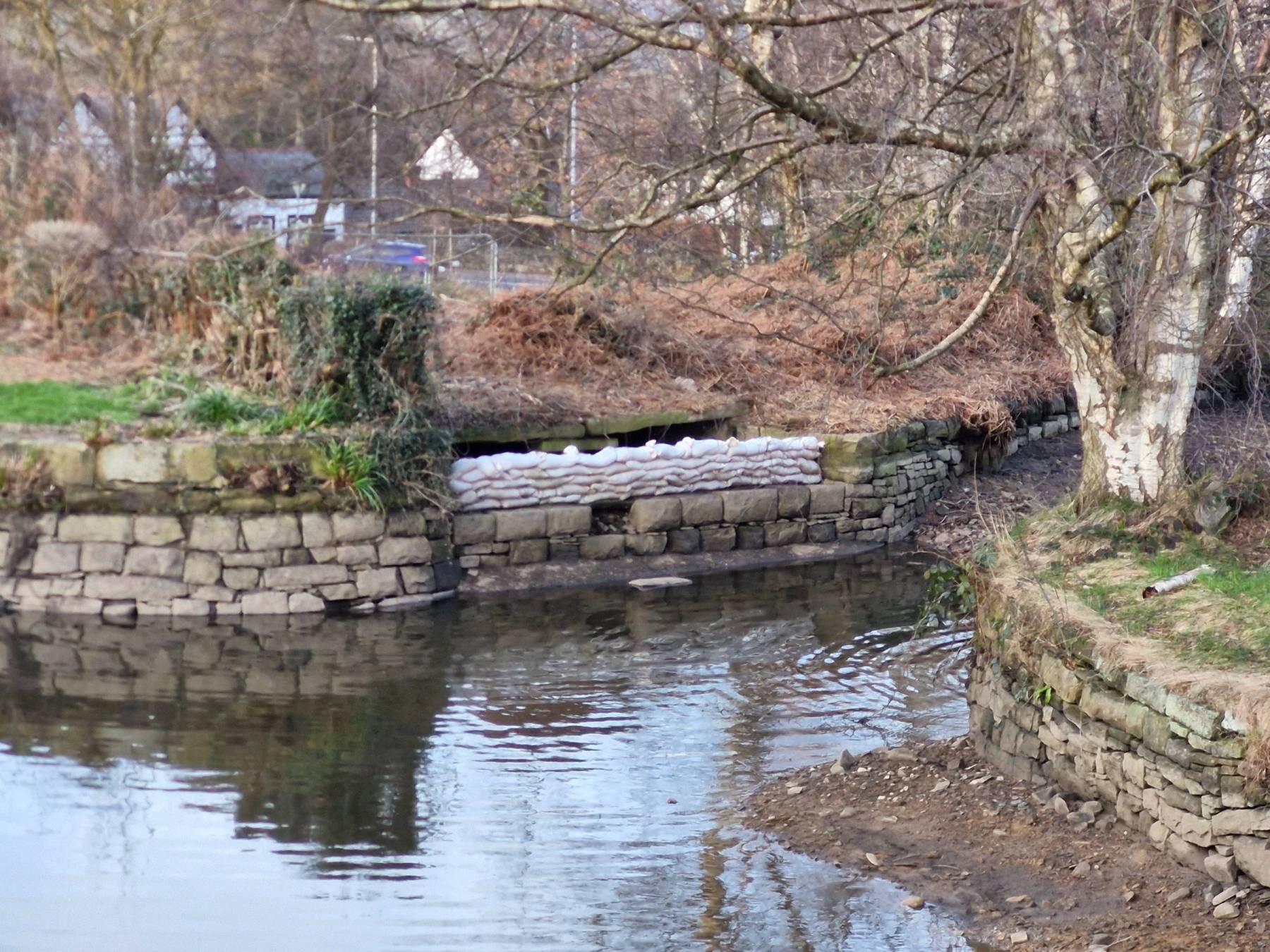-
Posts
9,087 -
Joined
-
Last visited
-
Days Won
9
Content Type
Profiles
Forums
Events
Gallery
Blogs
Store
Posts posted by magpie patrick
-
-
Found this picture on a Bridgwater Facebook group and thought it would be of interest, it shows a barge riding the surge behind the bore on the river Parrett , guided only by a man at each end with an oar. Don't know the date but I guess late 19th to early 20th century. Any comments much appreciated
To add, the large walls on the left hand bank may be the entrance to the docks, there were wharves upstream of the docks and navigation was conducted many miles inland, although there are few photographs as such trips were infrequent by the early 20th century
-
 2
2
-
-
Welcome to the forum, but please note you cannot continuously cruise between Keynsham and Bath, it isn't far enough. It's also very difficult to find somewhere to moor on that length that isn't one of the following - occupied, private, or involves mooring to a tree (on private land) with a yomp to get anywhere.
-
 1
1
-
-
17 minutes ago, MtB said:
Is it a wide or a narrow canal?
Narrow
The K&A is wide but it's two connecting waterways (Wilts and Berks and Somerset Coal Canal) were both narrow - so a lot of coal went through Bradford Lock, the only lock between the two canals, in narrow boats.
21 hours ago, Tonka said:Can't believe the NBTA aren't supporting it as look at all that mooring space which will be available
The Coal Canal Society, when I was chairman, made this argument for the Coal Canal, although we had in mind numerous small basins not 10 miles of linear moorings. We were really selling the idea to Bath & North East Somerset Council rather than the NBTA, and up to a point they bought it - the point at which they stopped buying it was the cost of restoring the canal....
-
-
On a swans neck it is only necessary that both curves are the same, with a C shape the two bends would have to add up to 180 degrees otherwise the tiller would point up or down. Thus swans neck manufacture is easier to get right
-
 2
2
-
 1
1
-
-
My first thoughts are it would help if we knew which locks this is - there are some that are known sticking points and as a result have tried and tested methods of getting through them
-
 1
1
-
-
6 minutes ago, magnetman said:
Deepest lock in England which is less than 6ft wide

someone will get it quickly.
Only lock in England which is less than six feet wide?
Or perhaps not, one on the Aylesbury branch narrowed itself temporarily...
-
So, we've got the deepest in the world at Oskemen, thanks to @Greenpen, we've the deepest in England, and probably therefore the British Mainland at Tuel Lane, and the deepest in Ireland (and thus the British Isles) at Ardnacrusha.
Deepest in France? Germany? North America? And how does that one at the Slapy dam near Prague compare?
And should I be worried that my phone autocomplete knew Slapy dam as soon as I got to the L of Slapy?
-
11 minutes ago, 1st ade said:
You did when I took the exam (quite a few years ago). I practised by "reporting" index numbers as they overtook me on the motorway - "Just been passed by Tango Tango Charlie, eight six zero, Mike"
7 minutes ago, Rod Stewart said:Was it a Sierra?
You could have got a foxtrot Oscar in there too.
I happen to know it was dad's big yellow Ford Cortina estate which carried the family of four along with a car top dinghy and bikes on many an adventure for eight years. This was in the days before manufacturers told you the roof rack weight limit!
A year after dad sold it it shot past us on the M6 near Lancaster - we were doing 70 and it left us standing....
-
2 hours ago, Rod Stewart said:
When onboard my boat, I miss fresh milk. A fresh milk delivery service from Cowes would be a thing of beauty.
And eggs.
Where are you finding the Cows that lay eggs?
-
 2
2
-
-
I'm not sure I've got any pictures but my first boat, Ripple, had a fixed cross bed at the stern, the Semi-Trad deck having an extended walkway over the bed on one side. This did make the back deck a peculiar (but surprisingly sociable) L shape but it worked, good sized fixed double....
-
1 hour ago, Tonka said:
You are now an entrepaneer
1 hour ago, MtB said:Yes I've always liked Indian food.
I will admit my thoughts were that MtB was now a starter made from cheese!
36 minutes ago, LadyG said:Well, why did he buy a brand new boat without getting a BSC, how can it be insured and licenced assuming it is on CRT waters?
As far as I'm aware new boats don't have a BSC as they are supposed to be RCR complaint - it's a bit like the MOT on a car. I've never been able to afford a new boat though so I'm not sure on this
-
If anyone is interested this is the top end of lock 14 today. The bywash has been sealed off and the pound drained. Sealing off the bywash is obvious, I guess draining the pound provides storage capacity should a lot of water suddenly come round the bywash at 15.
The gap under the concrete bags looks like a hole, but it isn't - that one coping stone has suffered more than the others fir some reason
-
 1
1
-
-
11 hours ago, magpie patrick said:
The maximum fall at Eastham is complicated, and in part depends on the draught of the vessel. There is probably also a point beyond which they won't work the lock anyway but I have no information on that.
The tidal range at Eastham is up to 27 feet, but as the top 5 feet or so is higher than the ship canal this doesn't give any meaningful figure for how far the lock might fall.
Bradshaw 1904 - maximum draught on the ship canal was 26 feet, and to get a vessel that deep into the lock the tide had to be nearly level - the canal level was 14 feet above the Old Dock Sill in Liverpool and the dredged depth of the approach channel was 12 feet below.
However there was a plan then, presumably carried out, to dredge the approach to 20 feet, giving an extra 8 feet (in other words, a possible lift of 8 feet for the largest vessels). The lower sill was a further 3 feet down, meaning a vessel that just cleared it would lift 11 feet.
The lowest ebb tides, the equinoctial spring tide, is ten feet below old lock sill, or 24 feet below canal water level. It's worth noting there's still 13 feet over the sill of the lock.
Whether they'd operate it with a 24 foot lift is another matter.
Further to this the fall of the other locks on the MSC are given as follows, starting at Manchester:
Mode Wheel 13 ft 6
Barton 15 ft
Irlam 16 ft
Latchford 16 ft 6
The tide flowed to Latchford in 1904 (I think it's kept out at Eastham now) so at high tide for about three quarters of the lunar cycle the tide would reduce the fall.
I suspect there are many dock entrance locks that sometimes fall more than 20 feet, I went through Barry Docks and the fall was greater than the funnel height on Waverley. Portishead marina lock is used by inland boats on a fairly regular basis and is certainly deeper than 20 feet - the tidal range in the Bristol Channel means that if a dock were to be commercially viable it needed a deep entrance lock.
Whilst all these locks are deeper than Tuel Lane, it's arguable that they're not really on the canal system. I'd suggest that if Eastham has a claim because it's on the Manchester Ship Canal, then Portishead has a claim because it's on a through route between connecting waterways. But neither see boaters using them as their usual route - they're adventures. Whereas there are hire boats that go through Bath and Tuel Lane every week.
-
5 hours ago, magnetman said:
This is what I was thinking of.
However one would need to ask of the lock is navigable at that state of tide. If not then it is not a lock its just a structure.
4 hours ago, fanshaft said:Good point. When barging I've got in at first of flood, loaded with a 7ft draft but probably not dead low water and nobody would want to go out then only to have to punch the flood. So maybe a theoretical thing.
The maximum fall at Eastham is complicated, and in part depends on the draught of the vessel. There is probably also a point beyond which they won't work the lock anyway but I have no information on that.
The tidal range at Eastham is up to 27 feet, but as the top 5 feet or so is higher than the ship canal this doesn't give any meaningful figure for how far the lock might fall.
Bradshaw 1904 - maximum draught on the ship canal was 26 feet, and to get a vessel that deep into the lock the tide had to be nearly level - the canal level was 14 feet above the Old Dock Sill in Liverpool and the dredged depth of the approach channel was 12 feet below.
However there was a plan then, presumably carried out, to dredge the approach to 20 feet, giving an extra 8 feet (in other words, a possible lift of 8 feet for the largest vessels). The lower sill was a further 3 feet down, meaning a vessel that just cleared it would lift 11 feet.
The lowest ebb tides, the equinoctial spring tide, is ten feet below old lock sill, or 24 feet below canal water level. It's worth noting there's still 13 feet over the sill of the lock.
Whether they'd operate it with a 24 foot lift is another matter.
-
6 hours ago, Ian Mac said:
An apocryphal story.
The local councillors responsible for Tuel Lane lock restoration were taken and shown the then deepest lock on the system at Bath. On their return, they agreed to the plan for the new lock and tunnel/bridge being built, but on the condition that their lock was the deepest on the system. This was easily achieved by the adjustment of the weir height on lock 2.They needn't have worried - almost no-one does the full rise and fall at Bath Deep Lock as filling it lowers the pound above by at least a foot! It's a very short pound and the next lock is of course only half the rise.
There is supposed to be a pump to address this, but it hasn't worked for years - they just run water down at busy periods. The entire flight is back-pumped anyway so I guess no one sees the point in repairing the deep lock pump.
note - the deep lock was built before the canal was restored, at the insistence of central government, as part of a road scheme that was going to wipe out lock 8. Bath City Council thought the idea the canal would be restored was bonkers but were told to do it. I don't think anyone expected today's level of traffic.
-
1 hour ago, ditchcrawler said:
I thought proper boaters just jumped down from the side of the lock onto the roof
But perhaps not at Ardnacrusha.... 😳
2 hours ago, magnetman said:I'd probably just bow haul it but might consider a 3/8 rather than a 1/2 inch line as it is lighter.
I realise you jest but Ardnacrusha is a shaft lock, the upper chamber drops 70 feet and at the bottom end is a 55 foot wall with a guillotine gate at the bottom of it! I can think of all sorts of logistical problems trying to rope a boat through...
-
 1
1
-
-
15 minutes ago, magnetman said:
Does it technically count as one lock is it was originally two?
Also the deepest lock in England might be ship lock.
MSC?
The MSC locks are around 14 foot 6 each (Except Eastham, the tidal lock, which is only a couple of feet)
19 minutes ago, David Mack said:Funny that. It was wide when I last passed through it, with another narrow boat alongside us.
For a long time Tardebigge Top Lock was claimed to be the deepest narrow lock, but I have a feeling that there is a deeper one somewhere.
Tardebigge's claim was always false - it isn't that deep at about 11 foot 6. The 14 foot claim was made by de Salis in Bradshaw 1904, but is incorrect. At the time Aberfan was deeper anyway, a two-rise with a total lift of 29 feet.
-
Having personally pushed hard for the RCHS archive to get off the ground it's really good to see it getting used and giving value! I'll feed this back to the Council and Managing Committee.
@1st ade did a fair amount of the behind the scenes work too.
-
 1
1
-
-
Interesting - I've been out of the loop for sometime now on freight developments but as you suggest @fanshaft may know.
-
19 hours ago, peterboat said:
Yorkshire Swan rescue told me that swans can't take off from roads apparently its too painful on their feet. They land on roads because if wet they looked like water.
Given the way they land I should imagine that smarts a bit too 😬
-
 3
3
-
-
8 minutes ago, Jerra said:
Logic dictates that in my fairly long life and given my interest in birds I should have found a number of swans stuck on roads. As yet I haven't.
I agree - the only time I've seen swans stuck on a road it was the hard shoulder on a motorway viaduct, and the problem wasn't the amount of road, it was the traffic and the swans were terrified.
I genuinely don't know whether swans can launch themselves off a ledge, but even if they can, in this instance the crash barrier was in the way.
In case anyone is wondering, I rang the emergency services and advised them, potential obstruction even if one takes a callous view ignoring the welfare of the swan.
I am very much into swan welfare btw - the whooper swan in migration is a sight to behold
-
 2
2
-
-
14 minutes ago, booke23 said:
That's what I thought.
Youtube comes to the rescue.
31 minutes ago, Arthur Marshall said:Any idea why not? Water I can understand, but if grass, why not roads?
It's ok, I'll look it up...
The problem, as shown in the video, is they need a long run up. Swans don't do vertical take off.
Many years ago whilst lunching with Magpie the Elder, we saw two swans in a lock in Cassiobury Park - the lock was almost empty and they couldn't get out, I surmised they'd gone asleep in the full lock the night before. I managed to force a bottom paddle up an inch or so with my hands and a few minutes later I opened the gate - they needed no second invitation to leave the lock which seemed to confirm they were stuck!
-
The canal changes character quite a bit, but whilst it was restored it wasn't restored to any particular standard. Practically what @magnetman says is true but the reason the banks are so wild is that restoration of many lengths didn't consist of much more than dredging the channel and hoping for the best.
The infamous Limpley Stoke dry section does have a shelf, but it's beyond the end of your proposed cruise.
I don't recommend mooring on the summit - the level drops alarmingly on occasion.
Other than that, I've taken a 23 foot cabin cruiser, a 45 foot narrowboat and a 56 foot by 12 foot wide beam over much of the canal (all of it between them) and always managed to moor somewhere
-
 1
1
-







Riding the tide - Bridgwater
in History & Heritage
Posted
Note from Bradshaw 1904
Above Bridgwater there is a good trade at all times to the various brickworks within the first two miles of the river beyond the town, but beyond this trade is extremely small...
Bradshaw also states there is a towpath from Thorney Mills to Bridgwater (a distance of about 15 miles, but that boats are towed by steamer on the lower river below this (I'm guessing the towpath went no further than Town Bridge, which is a little upstream of this shot)
This picture suggests the statement about towing wasn't entirely true...
I've never seen the Bridgwater bore, but understand it has a height of 2-4 feet.